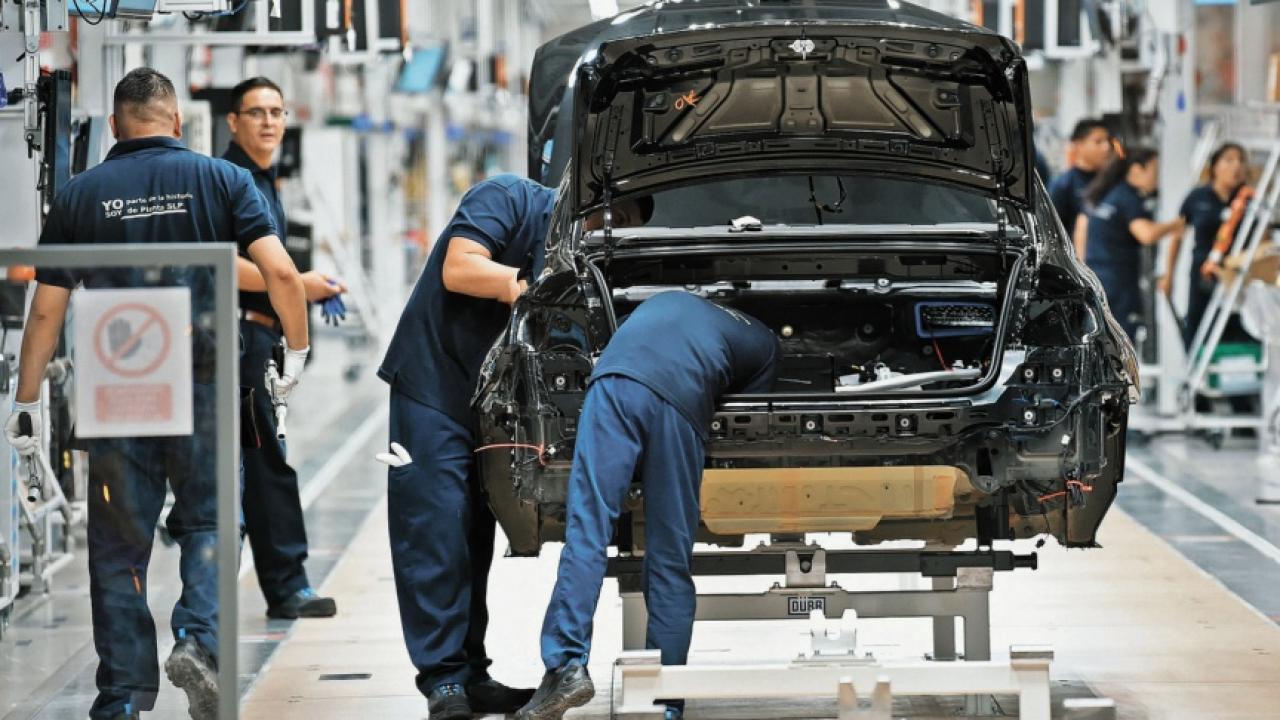
The United States' two neighbors may already retaliate against Washington as a result of this panel, since the US government has not implemented related measures in accordance with it.
The United States Trade Representative (USTR) established a reluctant position to comply with the ruling of a panel under the Treaty between Mexico, the United States and Canada (T-MEC), which keeps companies in the automotive sector in uncertainty, the largest trade in the North American region.
Mexico and Canada may already retaliate against the United States as a result of this panel, since the US government has not implemented related measures in accordance with it.
“The United States has explained that a resolution should benefit all USMCA Parties and their common goal of improving production and employment in North America.
“However, the data presented during the panel proceedings (including confidential data from the automakers) suggest that the Mexican and Canadian interpretation could result in a level greater than 10%, or even 20%, of lower content of North America by vehicle than the United States interpretation, undermining a key objective of the USMCA,” the USTR said in a report issued this Monday.
To date, the USTR unilaterally enforces automotive rules of origin regulations despite losing the ruling.
Additionally, the USTR acknowledged in the report that automakers and their associations urged the United States to implement the panel's ruling by adopting the interpretation of the basic parts advocated by Canada and Mexico.
Some stakeholders also commented that the United States' failure to implement the panel's ruling would undermine the USMCA dispute settlement mechanism.
According to the USTR, several commentators encouraged the United States to resolve the contentious case with Canada and Mexico to reduce uncertainty for producers.
The American Automotive Policy Council (AAPC, which represents automakers GM, Ford and Stellantis) and the Canadian Motor Vehicle Association (CMVA, which represents those same companies in Canada) proposed that the United States resolve the pending litigation with a “reasonable implementation schedule.”
The AAPC and CMVA did not recommend how the litigation should be resolved, but noted that its resolution would bring greater certainty and predictability to the North American automotive supply chain.
In the panel, Mexico argued that the T-MEC's automotive rules of origin allow the use of roll-up methodologies, which allow materials (e.g., automotive parts) that have acquired origin by meeting a value content threshold regional products are considered fully originating when used as inputs in a subsequent manufactured product.
In contrast, the United States has taken the position that the USMCA does not permit the use of roll-up methodologies with respect to certain essential parts of finished vehicles.
WHAT IS THE DISCREPANCY BETWEEN MEXICO AND CANADA WITH THE US?
- The discrepancy between Mexico and Canada with the United States has to do with the way of accounting for the regional value content (RCV) of motor vehicles produced and traded in North America.
- The VCR measures the percentage of parts produced in the region that contain a vehicle assembled in North America.
- Whether or not this vehicle enjoys the tariff preferences of the treaty depends on compliance or not with the VCR agreed in the T-MEC.
- The VCR in force in NAFTA was 62.5% and for the USMCA it was agreed to gradually raise it to 75% for essential parts, that is, engine, chassis and body, axle, suspension, steering system and battery .
- Regarding the accounting for the VCR of a vehicle, Mexico and Canada argue that, once an essential part meets the agreed 75%, it should be considered as totally originating (100%) for the purposes of calculating the VCR of the unit.
- The US, on the contrary, considers that for the purposes of calculating the VCR of the vehicle, the specific VCR of each essential part must be taken, without the possibility of considering the component as 100% originating.









